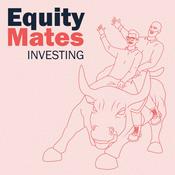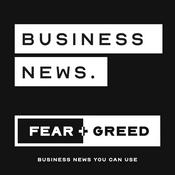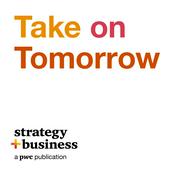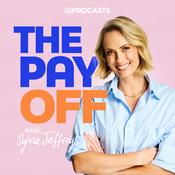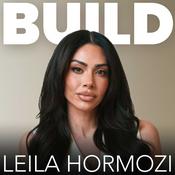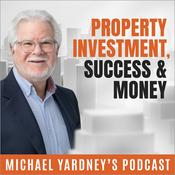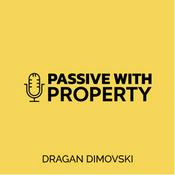97 episodes
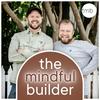
How to Unite Architects & Builders
14/12/2025 | 58 mins.
"Architects design things we can't actually build."We sat down with Saxon Hall, Principal Architect at Align Architecture, to tackle the age-old tension between architects and builders. Saxon's unique perspective as a carpenter's son gives him insight into both sides of this divide.In this episode, we explore why communication breaks down between architects and builders, and more importantly, how to fix it. Saxon shares his 'Align Build Collaboration' method that brings builders into projects from day one, the debate around tender vs negotiated contracts, and why energy-efficient design doesn't have to sacrifice aesthetics.Saxon's diverse experience across residential, heritage, and sustainable projects proves that when architects understand building practicalities and builders appreciate design intent, everyone wins.Key topics: • Why early builder involvement saves headaches • Tender processes vs negotiated contracts • The poetic nature of architecture meets practical building • Climate-adapted, sustainable design solutions • Balancing collaboration with contractual obligations👇 CHAPTER MARKERS 👇00:00 Introduction and Saxon's Background01:52 Unique Projects in Tasmania04:13 Path to Architecture05:54 Builder-Architect Relationship07:57 Early Contractor Involvement09:30 Negotiated vs. Tender Contracts16:03 Cost Estimation Challenges30:13 Understanding Builder Transparency31:45 The Importance of Real-Time Costing33:47 Educating the Broader Community34:08 Passive House Design Challenges36:57 The Poetic Nature of Architecture42:10 Collaborative Construction Processes47:53 Balancing Tradition and Innovation53:20 Engaging with Align BuildLINKS:Align Build:https://align.build/Connect with us on Instagram:https://www.instagram.com/themindfulbuilderpod/ Connect with Hamish:Instagram: https://www.instagram.com/sanctumhomes/Website: www.yoursanctum.com.au/Connect with Matt: Instagram:https://www.instagram.com/carlandconstructions/Website: www.carlandconstructions.com/

Warm vs Cold Roof - Beer and Building Science Australia
09/12/2025 | 1h 19 mins.
The conversation delves into the mould issues arising in bushfire zones, exploring how sealed environments contribute to the problem and the ongoing search for evidence to address these challenges.takeawaysThe mould issue in roof spaces began in bushfire zones.Sealing buildings to prevent embers can lead to mould problems.Cold, bushy areas are particularly susceptible to mould.There is a need for more evidence regarding mould issues.Sealed environments create significant risks for mould buildup.Using tools like Wufi can reveal disastrous conditions.Building practices need to be reconsidered in bushfire zones.Health risks associated with mould are a growing concern.Awareness of mould issues is still limited among the public.Addressing mould requires a collaborative effort among experts.

Why isn't passive house growing?
07/12/2025 | 56 mins.
"The message that passive house is better, just isn't reaching people." We explore what actually happens when passive house ambitions meet the realities of Australian building sites - from the builder's perspective, the architect's challenges, and the client's concerns.Today we’re discussing what it means to design and build a passive house with Sven Maxa from Maxa Designs: the learning curves, cost considerations, and collaboration required to bridge the gap between high-performance building theory and practical execution. We break down what changes for builders tackling their first passive house spec, how architects balance performance with design, and what clients need to know before committing to passive house principles.This isn't about chasing certification badges - it's about understanding whether passive house standards can improve building performance without making life harder for everyone involved.Whether you're a builder considering your first passive house project, an architect integrating performance requirements, or a homeowner exploring energy-efficient building options, this conversation reveals the real-world challenges and opportunities of passive house construction in Australia.👇 CHAPTER MARKERS 👇00:00 Introduction and Sponsor Acknowledgment01:54 Discussion on Passive House Adoption in Australia02:40 Maxa Design's Experience with Passive House03:19 Global Adoption of Passive House Standards05:36 Challenges in Marketing Passive House07:46 Cost Analysis and Financial Considerations14:55 Personal Experiences with Passive House26:00 The Importance of Certification and Quality Assurance29:39 Outdated Building Codes and Industry Challenges31:13 The Cost and Value of Certification32:56 Integrating Certification Without Client Awareness34:12 Design Documentation and Additional Costs38:55 Real-World Examples and Feasibility Challenges41:51 The Importance of Builder Engagement46:23 Sustainability and Passive House Certification51:26 Practical Advice for Aspiring Professionals55:02 Conclusion and Contact InformationLINKS:Maxa Designs:https://www.maxadesign.com.au/Connect with us on Instagram: @themindfulbuilderpodConnect with Hamish:Instagram: @sanctumhomesWebsite: www.yoursanctum.com.au/

From a soccer world cup to carpenter
30/11/2025 | 55 mins.
“I learned about discipline and resilience at a very young age, all because of this passion that I held. Those lessons have certainly translated into my adult life.”In this episode, we sit down with Sally former Matilda, now a carpenter and business owner, to explore what it’s really like to transition careers in the building and construction industry. Sally shares her story of moving from elite sport to the tools, overcoming injury, facing health challenges, and building a new path based on shifting values and a growth mindset.Whether you’re a mid-career tradie, thinking about a change, or just looking for inspiration, Sally’s journey is a powerful reminder that it’s never too late to start a new chapter.👇 CHAPTER MARKERS 👇00:00 – Introduction & Sally’s Early Sporting Life02:15 – Chasing the Dream: From Backyard to World Cup05:30 – The Pressure of Success & Early Retirement08:10 – Identity Shift: “What Now?” After Sport10:45 – Discovering Carpentry & Starting an Apprenticeship13:20 – Breaking Barriers: Women in Construction16:00 – Building Community & Handy Humans Collective18:30 – Facing Adversity: Health Challenges & Resilience21:00 – Redefining Success & Adapting to Change23:15 – Mentoring the Next Generation25:00 – Lessons for Tradespeople: Growth, Values & CommunityLINKS:Handy Humans:https://www.instagram.com/_handyhumans/Connect with us on Instagram: @themindfulbuilderpodConnect with Hamish:Instagram: @sanctumhomesWebsite: www.yoursanctum.com.au/Connect with Matt: Instagram: @carlandconstructionsWebsite: www.carlandconstructions.com/

Do buildings need to be certified?
23/11/2025 | 1h 9 mins.
"Even if you finish the build, it's not too late to certify." That's what Emilia Iacovino from Detail Green tells builders who've completed high-performance homes without formal Passive House certification. But should you wait that long? We sit down with Emilia, one of only five Passive House certifiers in Australia, to explore whether certification is just bureaucratic red tape or if it delivers genuine value for builders and clients.Emilia's unconventional path, from architecture aspirations through electrical engineering and automotive work in Japan, gives her unique insight into both the technical requirements and practical realities of achieving Passive House standards in Australian conditions. She reveals common pitfalls that trip up projects, from incorrect climate file selection to inadequate documentation and explains why early design reviews prevent expensive on-site corrections.This conversation unpacks why Passive House focuses on building fabric first rather than just adding solar panels, the adoption challenges facing Australia's building culture and why certification provides accountability that protects both builder reputations and client investments in high-performance homes.LINKS:Connect with Emilia:Website: https://www.detailgreen.com.au/ Connect with us on Instagram: @themindfulbuilderpodConnect with Hamish:Instagram: @sanctumhomesWebsite: www.yoursanctum.com.au/Connect with Matt: Instagram: @carlandconstructionsWebsite: www.carlandconstructions.com/
More Business podcasts
Trending Business podcasts
About Mindful Builder
Listen to Mindful Builder, Australian Finance Podcast and many other podcasts from around the world with the radio.net app

Get the free radio.net app
- Stations and podcasts to bookmark
- Stream via Wi-Fi or Bluetooth
- Supports Carplay & Android Auto
- Many other app features
Get the free radio.net app
- Stations and podcasts to bookmark
- Stream via Wi-Fi or Bluetooth
- Supports Carplay & Android Auto
- Many other app features


Mindful Builder
download the app,
start listening.



